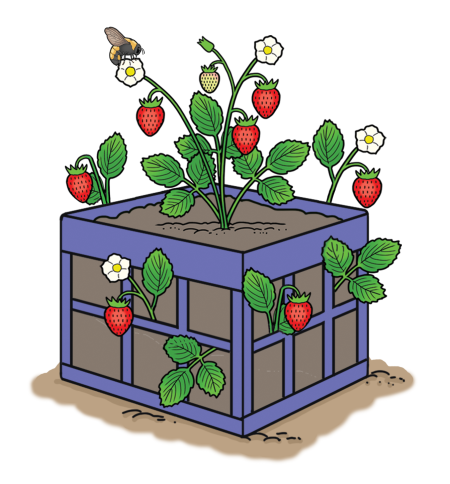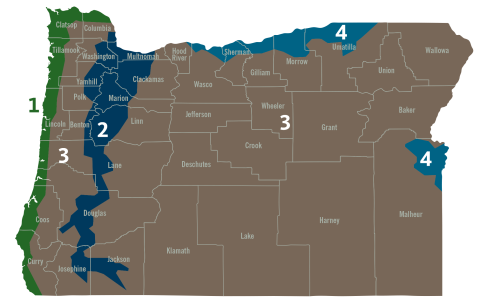
- Plants can grow quickly this time of year. Train growing tomatoes on a trellis or support.
- Monitor plants for diseases and pests. Spray aphids and spittlebugs with a hose to remove them.
- Harvesting veggies as soon as they are ready helps stimulate the plant to produce more.
- Continue to plant flowers and herbs. June is a great time to start basil!
- If you live in central or high-elevation Oregon, you should protect young plants at night.
Kids Can!
Show kids that gardening and nutrition are fun! Plan a garden scavenger hunt based on a meal. For instance, "The Great Salad Hunt."
Planting Chart
| Planting Tips | Coastal | Western valleys | High elevations | Columbia/Snake River valleys |
|---|---|---|---|---|
| Start seeds indoors | ||||
| Start seeds outdoors | Arugula, beets, cilantro, corn, dill, green beans, potatoes, parsnips, turnips, squash | Arugula, beets, cilantro, corn, dill, green beans, parsnips, potatoes, squash | ||
| Transplant outdoors | Basil, peppers, tomatoes, melons, cauliflower, celery, cucumbers, eggplant, kale, kohlrabi, lettuce, oregano, pumpkins, rosemary, sage, thyme | Basil, peppers, tomatoes, melons, celery, cucumbers, eggplant, lettuce, oregano, sage, thyme |
Where is your garden?
Oregon has four growing regions. Choose vegetable varieties and planting dates suitable to the growing conditions in your area:

- Oregon coast: cool, long season of 190 to 250 days.
- Western valleys: 150 to 250-day season; warm days, cool nights; length of season varies year to year.
- High elevations: short growing season of 90 to 120 days; frost can occur during any month.
- Columbia and Snake River valleys: 120 to 200-day season; hot days, warm nights; length of season fairly well defined.


